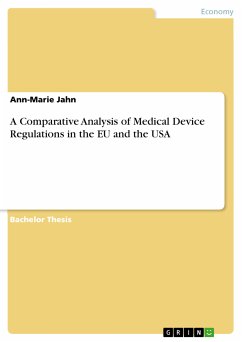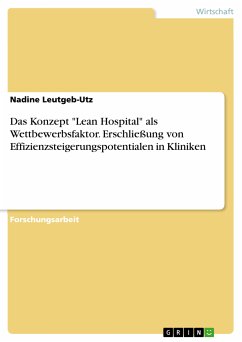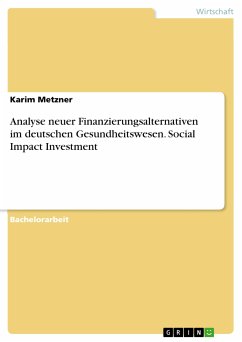Bachelor Thesis from the year 2012 in the subject Economy - Health Economics, grade: First, Berlin School of Economics and Law, language: English, abstract: Innovations in the medical device industry have improved the health of the world population with the ability to better diagnose, prevent, predict and cure illnesses. The number of medical devices on the market is increasing exponentially, together with the complexity, diversity and technical variation of such products. In light of its impact on patient health, regulation of medical devices is necessary to ensure that safe and effective products enter the marketplace, and that the product’s benefit to the patient population outweighs its potential risks. Although there has been increasing public scrutiny of health care reform, medical devices and their global regulation has been a minor field of health economic studies. This study examines the medical device regulatory systems and its impact on health care economics, exemplarily on the legislative programs of two major markets - the United States (U.S.) and European Union (EU). Modern medical device technology dates its origin to the early 19th century, but has grown most significantly in the last 50 years (Banta, p. 15). Today, 10,000 different families of medical device types exist with more than 400,000 different individual products on the market (Eucomed 2011). Outstanding developments have included heart-lung machines, artificial joints, as well as radiographic imaging and the means to perform advanced brain surgery. The medical device technology sector is extremely innovative, with seven out of ten major medical innovations in the last 40 years coming from this field (Fuchs, Sox, JR. 2001). Despite these technological advances, medical devices sometimes fail during use and can actually result in patient harm. The purpose of regulating medical equipment is to minimize the risk of harm to the end user and to prevent potentially unsafe products from entering the marketplace. The main obstacle in developing and implementing effective regulation is the term safety itself, as it can hardly be measured and there is no formula that can be consistently applied. Guidelines have been established that measure product risk, mitigate risks where possible, and then evaluate the residual risks to determine which are acceptable. This means by implication that acceptance of risk is part of the regulation process in order to bring life-saving technologies with unknown long-term effects to the market.









